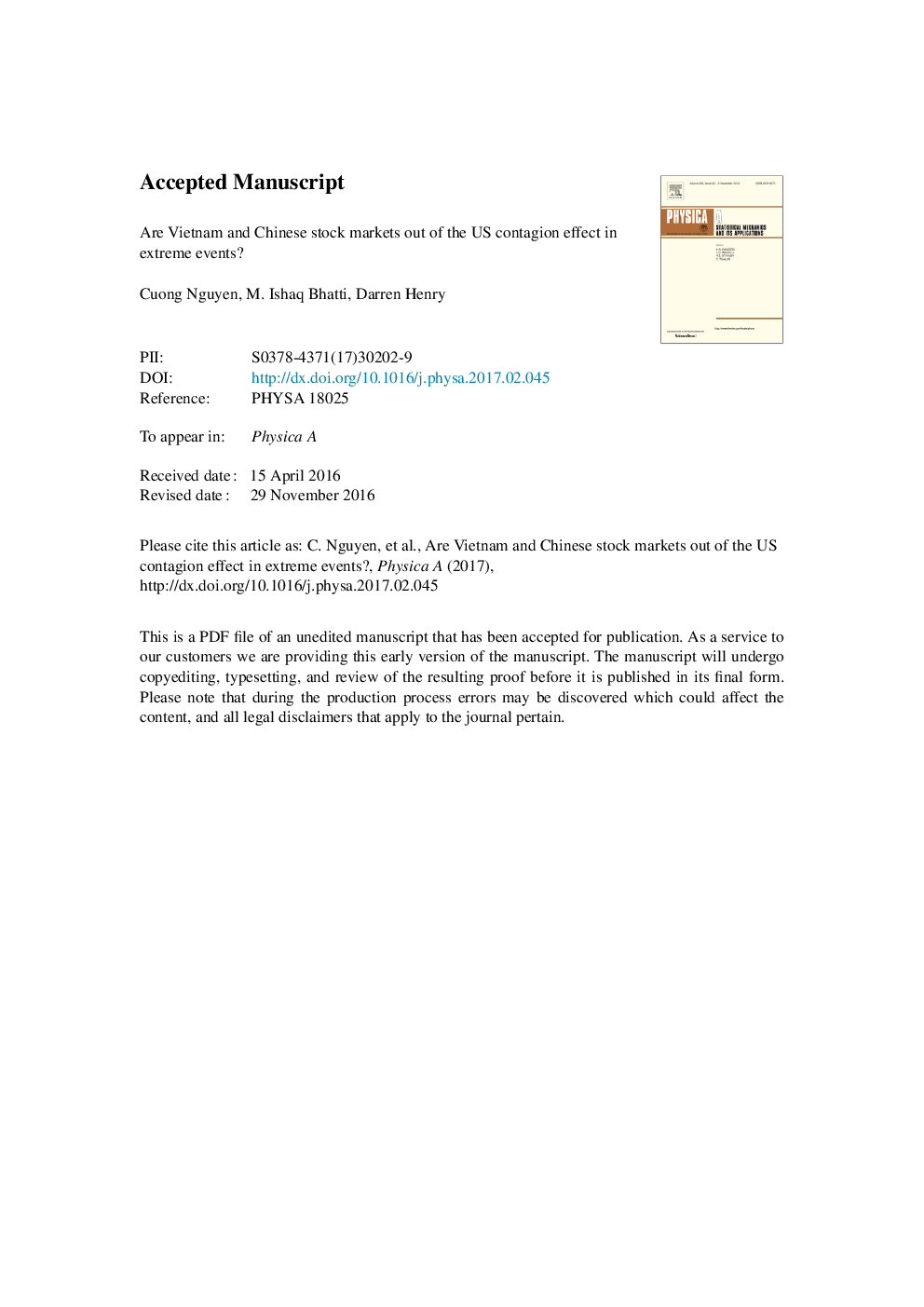| Article ID | Journal | Published Year | Pages | File Type |
|---|---|---|---|---|
| 5102884 | Physica A: Statistical Mechanics and its Applications | 2017 | 25 Pages |
Abstract
This paper employs Chi-plots, Kendall (K)-plots and three different copula functions to empirically examine the tail dependence between the US stock market and stock markets in Vietnam and China in order to test contagion effects pre- and post- the US subprime mortgage crisis. The results based on data between 2003 and 2011 indicate the presence of left tail dependence before and after the crisis suggesting no change in dependence structure, but there exists stronger left tail dependence between the US and Vietnam stock markets. It is observed that the US and Vietnam stock markets are more prone to crashing than booming together. For the Chinese market, the US and Shanghai stock markets exhibit left tail dependence before the crisis, but no evidence of post-crisis tail dependency. On the contrary, the Shenzhen stock market is independent of the US market before and after the crisis which implies that an extreme event in the US market is less likely to influence the Shenzhen stock market. This suggests that there is significant potential for risk diversification by investing in the Shenzhen market by US investors after the financial crisis. These results have not been documented in the existing literature and provide a new insight into risk diversification between the two important Asian emerging stock markets.
Keywords
Related Topics
Physical Sciences and Engineering
Mathematics
Mathematical Physics
Authors
Cuong Nguyen, M. Ishaq Bhatti, Darren Henry,
